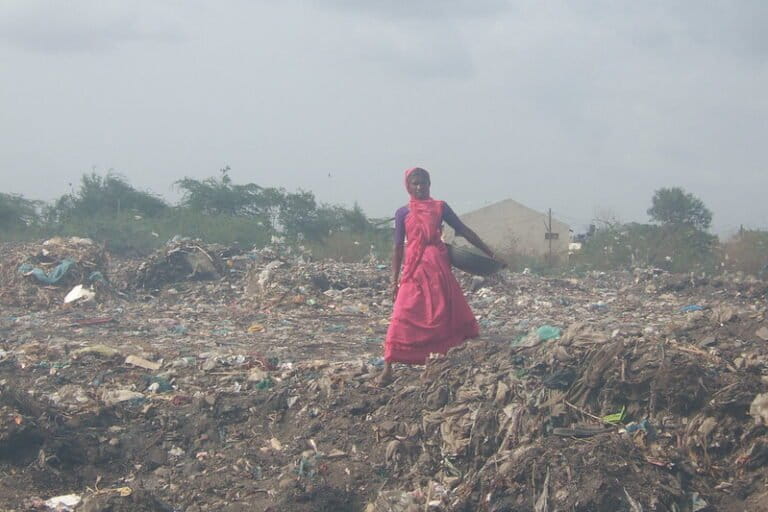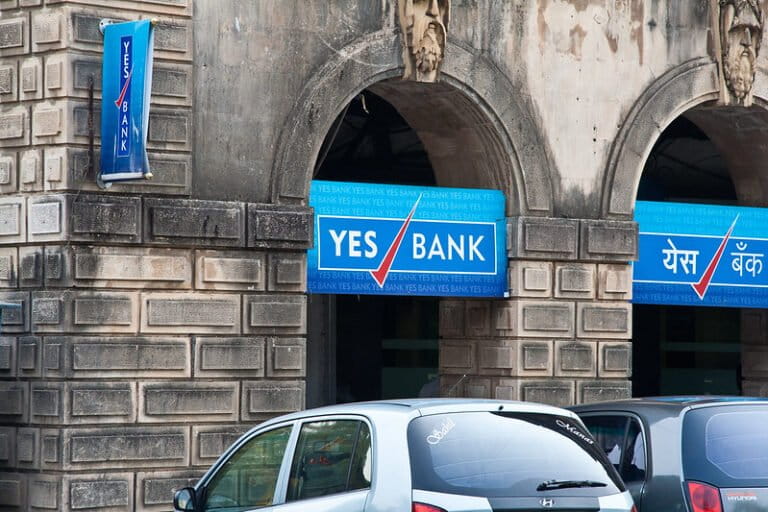- The Reserve Bank of India (RBI) has issued a framework for green deposits, which are investments meant to be used towards environmentally sustainable projects.
- Commercial banks offer ‘green deposit’ for customers who entrust their money in traditional saving schemes while wanting to contribute to a sustainable future.
- Banks with ‘green deposit’ schemes will be required to prepare and publicly publish a financing policy, that is assessed by a third party, as well as monitor the impact assessment of the green deposits.
With an increasing trend of commercial banks launching ‘green deposit’ schemes for retail investors, the Reserve Bank of India (RBI) has released a framework to shape the emerging market, including provisions to restrict greenwashing.
Several commercial banks offer schemes for investments in environmentally sustainable projects. Such investments are done through green deposits in sectors such as renewable energy, clean transport, green building, pollution control, wastewater management, sustainable water, etc. So far, at least six banks – the Central Bank of India (CBI), HDFC Bank, HSBC, Yes Bank, DBS India Bank, Federal Bank, and IndusInd Bank – offer such schemes. Some of the banks offer better interest rates on green deposits compared to traditional fixed deposits.
Experts that Mongabay-India spoke to, say that the framework released by RBI is a step in the right direction to boost the green finance ecosystem. The framework will go into effect from June 1, 2023.
Namita Vikas, Founder & Managing Director of auctusESG LLP says that RBI’s guidelines demonstrate its commitment to sustainable finance. More importantly, the guidelines would bring standardisation and a level-playing field into this segment, which would help scale it up across more market players. As this segment scales up, it would also help mobilise domestic capital towards green activities, she adds.
Neha Kumar, Head of the India programme, Climate Bond Initiative (CBI), which works to mobilise global capital for climate action, agrees that the framework reflects the central bank’s commitment to sustainable finance. “If you see the world over, many banks issue such products, but I don’t think any central bank has laid such guidelines. RBI has made it mandatory for Scheduled Commercial Banks (SCBs) and deposit-taking Non-Banking Finance Companies (NBFCs) to issue green deposits.”
A framework for a level playing field
The framework outlines eligibility requirements for banks to offer green deposits, reporting procedures, and ways to encourage customers to invest in environmentally sustainable projects.
The RBI circular says that all banks will have to implement a Board-approved Financing Framework, which is a set of policies and guidelines, to regulate and monitor the green deposits. This set of guidelines will ensure the effective allocation of funds received as green deposits to eligible green projects, Banks will have to make these details public through their websites.
The RBI framework states that the money raised from green deposits shall be based on the official Indian green taxonomy, that defines environmentally sustainable investments for investors to make a more informed choice. Since this is not released yet, the RBI has, for now, given an interim list of such sustainable sectors and activities that encourage energy efficiency in resource utilisation, reduce carbon emissions and greenhouse gases, promote climate resilience and/or adaptation, and value and improve natural ecosystems and biodiversity.
Read more: A framework for sovereign green bonds a step in the right direction but has miles to go
This interim list includes sectors such as renewable energy, energy efficiency, clean transportation, climate change adaptation, sustainable water and waste management, pollution prevention and control, green buildings, sustainable management of living natural resources and land use, and terrestrial and Aquatic Biodiversity Conservation.

Along with this list of sectors where banks can invest the green deposits, the RBI has also published a list of no-go sectors which are not eligible for investments. For instance, projects involving new or existing extraction, production and distribution of fossil fuels, nuclear power generation, direct waste incineration, alcohol, weapons, tobacco, gaming, and palm oil industries are part of the no-go list. It also includes renewable energy projects generating energy from biomass using feedstock originating from protected areas. Landfill projects and hydropower plants larger than 25 MW are also barred from green deposit investments.
RBI’s introduction of formal and clear guidelines for green deposits will enable lenders to have more consistency and accountability, says a DBS Bank India spokesperson while responding to Mongabay-India’s queries. The bank offered green deposits to select customers as part of a pilot initiative to drive ESG solutions in 2022.

Commenting on the guidelines, Kumar from Climate Bond Initiative says that two things will be important for the success of the green deposit programme: first, the credible allocation of the proceeds, and second, some incentives for this scheme to take off at scale. Else, this may remain a theoretical exercise, even a risky one, if we do not appropriately qualify the use of proceeds.
Responding to queries on how to scale it up, she said, “We can learn from examples such as ABN AMRO Groenbank of Netherlands, which offers savers the possibility to save sustainably via a Green Savings Deposit. It uses the money it raises through this product to provide green loans to its clients. It has a fixed interest rate of 0.40% and a one-year fixed term, and savers can qualify for a tax benefit. There is also a slab of up to EUR 61,215 (2022), exempt from tax on deemed investment income, and a 0.70% tax credit also applies to amounts invested in green deposits.”
Measures to avoid greenwashing
The RBI has also talked about impact assessment and third-party verification in its framework. It asks all banks to put a copy of the ‘Financing Framework’ on their websites after it has gone through external review, along with the opinion of the external reviewer.
The third-party assessment would not absolve the regulated entities (RE) or banks of its responsibility regarding the end-use of funds, the RBI framework says.
The framework gives emphasis on the impact assessment of the investment as well. The RE shall place a review report before its Board of Directors within three months of the end of the financial year. The report will cover several details like the amount raised under green deposits during the previous financial year, a list of green activities to which proceeds have been allocated, and the impact achieved in the green sector.

For example, if money from green deposits has been allocated to renewable energy, the bank will have to furnish the list of total energy capacity (in MWh), energy generated per year (in MWh), or greenhouse gas (GHG) emission avoided per year. The guideline asks for similar details under waste management, clean transportation, energy efficiency, and afforestation/reforestation.
Namita Vikas from auctusESG LLP said that the mandatory third-party verification requirement in the guidelines shows the central bank’s efforts to reduce greenwashing and improve credibility.
When asked whether the RBI framework is strong enough to control greenwashing, Kumar says, “I highly recommend a system of explicit cross-referencing of the standards/taxonomy an RE uses. For example, there are REs, such as the State Bank of India, certified green bond issuers. They would immediately become a candidate for ‘certified’ green deposits, subject to the fulfillment of the criteria for the projects they want proceeds of green deposits to go to. The choice can remain open to issuers of deposits, notwithstanding the fact that the tighter the definition being followed and verified, the lesser the chances of greenwashing.”
A push to green finance
India’s evolving sustainable finance space can play a major role in financing India’s energy transition to a green future, note experts.
Namita Vikas says that the Indian sustainable finance space has seen innovations and structuring in the wholesale banking segment. However, the green deposit would be one-of-its-kind innovation in the retail segment. Moreover, retail deposits are the lowest-cost funds for a bank. Thus, she added that this move helps raise low-cost green capital in India.
She explains that a limiting factor to scaling up the green finance market in India had been the dependence on offshore markets for dedicated green capital, due to the absence of a domestic dedicated green capital base. Resultantly, only large Indian companies have been able to launch green bonds because they can bear the costs. Hence, scaling up the green retail deposit market would enable greater mobilisation of the domestic green capital base, which could be extended through green loans. That includes mid-sized companies currently unable to access offshore green capital but want to invest in green projects. This augurs well for increasing the supply of investible opportunities within the Indian green finance space, she says.
Additionally, the green deposit process in banks is largely similar to term deposit process that banks are already used to. Hence, there won’t be a need for significant training and awareness-building programmes to scale up such products and it can be done at a faster pace, she added.
Vikas said creating an attractive basket of incentives is required to pull in depositor interest. That includes monetary incentives via higher interest rates and non-monetary incentives via alignment with sustainable activities. For example, the first green deposit structured by Yes Bank involved a higher interest rate and promoting paperless transactions and tree-planting initiatives. Similarly, recent interest rates on IndusInd Bank’s website show a 25-basis points difference between green and traditional 18-month term deposits. This comes along with a Green Assurance certificate to depositors at the year-end. She adds that creating such a basket of incentives that entices ‘commercially-minded’ yet ‘sustainability-oriented’ depositors would help make this product more attractive.

Kumar agrees saying that the country has a significant base of deposits to channel towards green/sustainable projects. She points out that the RBI has not allocated the proportion of deposits that should be ‘green’ but rather, has considered it as a starting point for a certain minimum supply of green finance to start flowing through the banking system. But it is a good beginning, she concludes.
Banner Image: Indian banks like HSBC, CBI, HDFC, etc. which offer green deposit schemes will now be required to publish financing policies to monitor the impact assessment of the green deposits, as per the new RBI framework. This shall help mobilize domestic capital towards green activities and reduce greenwashing. Photo by Miquel Parera/Unsplash
